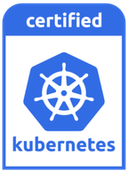mirror of
https://github.com/puppetmaster/typhoon.git
synced 2025-10-03 03:54:40 +02:00
* Change the workers managed instance group to health check nodes via HTTP probe of the kube-proxy port 10256 /healthz endpoints * Advantages: kube-proxy is a lower value target (in case there were bugs in firewalls) that Kubelet, its more representative than health checking Kubelet (Kubelet must run AND kube-proxy Daemonset must be healthy), and its already used by kube-proxy liveness probes (better discoverability via kubectl or alerts on pods crashlooping) * Another motivator is that GKE clusters also use kube-proxy port 10256 checks to assess node health
Typhoon 
Typhoon is a minimal and free Kubernetes distribution.
- Minimal, stable base Kubernetes distribution
- Declarative infrastructure and configuration
- Free (freedom and cost) and privacy-respecting
- Practical for labs, datacenters, and clouds
Typhoon distributes upstream Kubernetes, architectural conventions, and cluster addons, much like a GNU/Linux distribution provides the Linux kernel and userspace components.
Features 
- Kubernetes v1.24.4 (upstream)
- Single or multi-master, Calico or Cilium or flannel networking
- On-cluster etcd with TLS, RBAC-enabled, network policy
- Advanced features like worker pools, preemptible workers, and snippets customization
- Ready for Ingress, Prometheus, Grafana, CSI, and other optional addons
Docs
Please see the official docs and the Google Cloud tutorial.